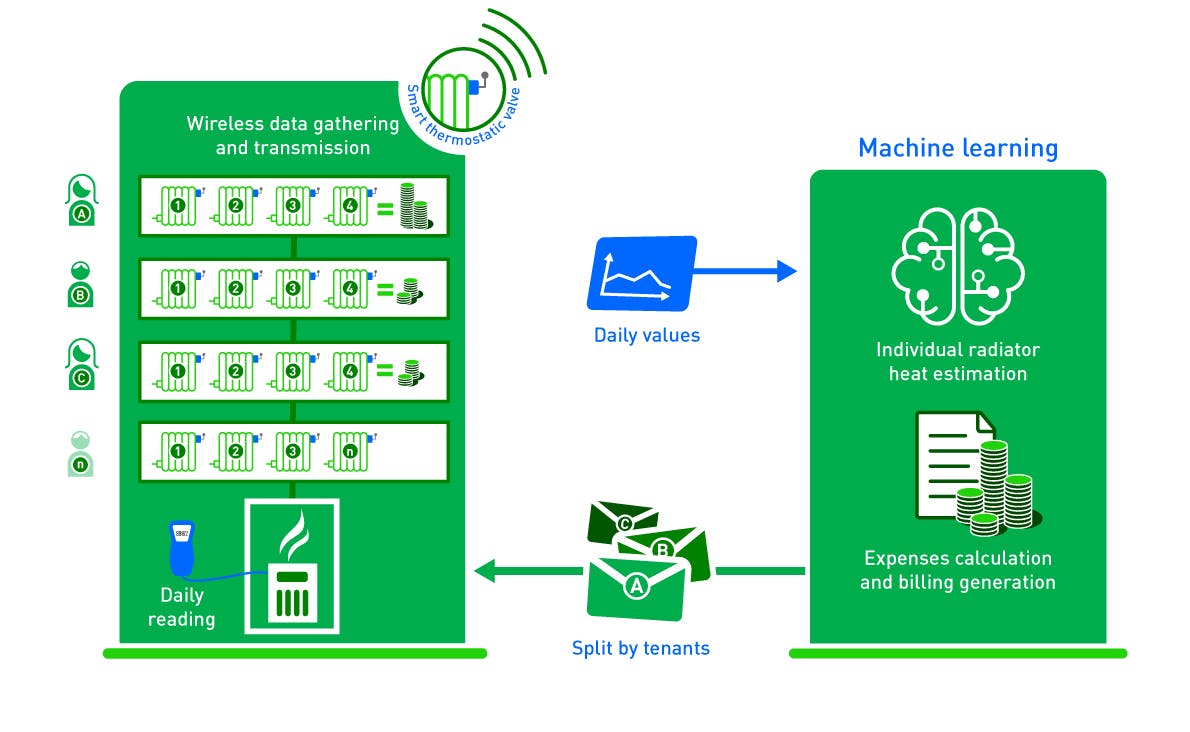27 June 2022
Smart energy management systems
Local management of energy systems is a key enabler of the future smart grid with a growing penetration of photovoltaic systems, electric vehicles, and heat pumps....
Using advanced technologies to enhance the energy efficiency of residential buildings, CSEM has developed an advanced, data-driven approach to compute radiator heating estimations via the SMINTEBI system, which utilizes their newly developed algorithm and relies on ‘smart’ thermostatic valves.


Large proportions of tenants are still billed using a standardized calculation that determines their heating bills based on the floor surface area of their apartments. This method reduces the incentive to adopt energy conservation measures, as tenants are not billed according to their individual consumer behavior.
Individual Tenant Billing (ITB) has been introduced to tackle this problem but the technology this method employs, Heat Cost Allocators (HCAs), are prone to miscalculating energy estimates. They can’t adapt to everyday conditions that can affect the way a radiator operates such as the presence of obstructions (furniture), poor radiator maintenance (build-up of dirt or debris) or inadequate commissioning, for example.
Large proportions of tenants are still billed using a standardized calculation that determines their heating bills based on the floor surface area of their apartments. This method reduces the incentive to adopt energy conservation measures, as tenants are not billed according to their individual consumer behavior.
Individual Tenant Billing (ITB) has been introduced to tackle this problem but the technology this method employs, Heat Cost Allocators (HCAs), are prone to miscalculating energy estimates. They can’t adapt to everyday conditions that can affect the way a radiator operates such as the presence of obstructions (furniture), poor radiator maintenance (build-up of dirt or debris) or inadequate commissioning, for example.
SMINTEBI is a new data-driven system capable of providing a more robust and accurate energy estimate, thanks to its use of smart thermostatic valves (STVs). Unlike conventional HCAs, the SMINTEBI algorithm can automatically and continuously adapt the system to cope with the everyday conditions that can affect a radiator’s performance, thus improving heat allocation. Moreover, it:
The STVs continuously measure the valve inlet temperature directly at the radiator, as well as the room temperature. This data is coupled with the information provided by the centralized heat meter that measures the overall consumed energy of all the radiators connected to the system. Both factors enable the patent-pending SMINTEBI algorithm, which is based on state-of-the-art machine learning, to accurately calculate each individual radiator’s energy consumption value. Resultantly, tenants are issued with precise heating bills that more accurately reflect their energy consumption behavior
The system has been tested (among other locations) at a four-floor multi-family building, which was chosen to test the SMINTEBI system in a real environment and under real conditions. The system’s heat allocation mean absolute percentage error (MAPE) was tested across multiple apartments, alongside conventional HCAs. The MAPE measured at 12.5% for the HCA and 6.7% for the SMINTEBI system – the equivalent of reducing billing error by 50%. This result showcases the SMINTEBI system’s adaptability and its capacity to overcome the real-life obstacles that can affect a radiator’s behavior, while also highlighting its ability to outperform conventional HCAs.
Scientific publication on the method: Y.Stauffer F.Saba R.E.Carrillo M.Boegli A.Malengo A.Hutter, "Smart sensors network for accurate indirect heat accounting in apartment buildings", Journal of Building Engineering, 2021, Find it also on arxive.